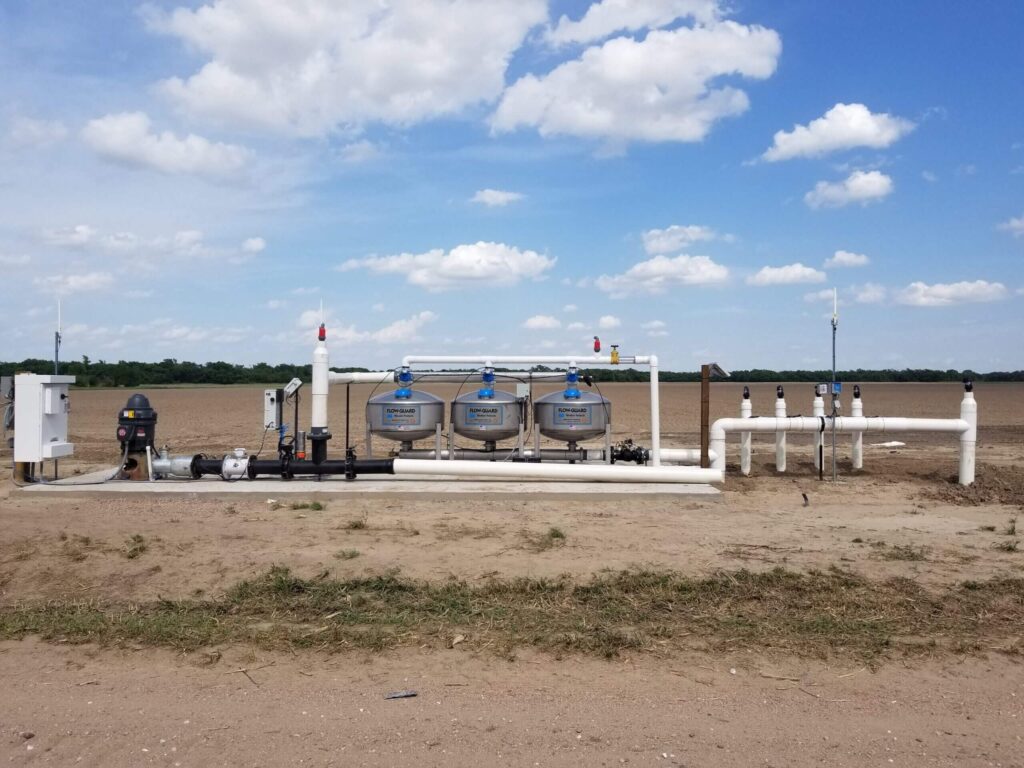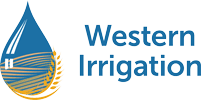Revolutionizing Corn Agriculture: The Role of Efficient Irrigation of Corn
As the global population continues to grow, the demand for food production has drastically increased. Corn, one of the world’s most important crops, plays a significant role in providing vital nutrients and sustenance to billions of people. However, with changing climate patterns and limited resources such as water, traditional methods of corn farming are becoming increasingly unsustainable. This is where efficient irrigation of corn techniques come into play. By implementing innovative irrigation systems, we have the potential to revolutionize corn agriculture and ensure its sustainable growth for future generations. In this blog post, we will explore the importance of efficient irrigation in modern corn farming and how it can lead to a more productive and environmentally conscious future for our planet.

The Importance of Irrigation in Corn Agriculture
Irrigation represents a crucial cornerstone in the realm of corn agriculture. As a highly water-dependent crop, corn requires significant amounts of water throughout its growth cycle, particularly during its crucial tasseling and silk stage. Without consistent and adequate hydration, the yield of corn can be significantly impacted, leading to poor harvests and substantial economic losses for farmers. However, the challenge lies not just in providing water, but in doing so efficiently and effectively.
Over-irrigation can result in water wastage and nutrient leaching, negatively impacting the environment. On the other hand, under-irrigation can stress the crop, leading to reduced yield and compromised quality. Therefore, adopting efficient irrigation techniques is not merely an option but a necessity in today’s corn farming industry. These advanced methods, which we will delve into further in this post, aim to optimize water usage while ensuring the health and productivity of crops. By implementing these practices, farmers can achieve healthier crops, higher yields, and contribute to a more sustainable agricultural practice that balances productivity and environmental stewardship.
The Evolution of Irrigation Techniques in Corn Farming
The evolution of irrigation techniques in corn farming paints a picture of human ingenuity and the continuous pursuit of sustainable practices. It started with the age-old method of flood irrigation, where water is poured directly onto the fields. This technique, although simple, is vastly inefficient due to substantial water loss through evaporation and runoff.
The advent of technological innovations led to the development of more sophisticated methods such as sprinkler and drip irrigation. Sprinkler systems simulate rainfall by distributing water through a network of pipes and spray heads, allowing for better control and reduced water waste. However, these systems can still lead to water loss through evaporation and wind.
The shift to a more sustainable approach led to the introduction of drip irrigation. Considered the gold standard of efficient irrigation, drip systems deliver water directly to the root zone of the plants, minimizing evaporation and maximizing water use efficiency. This precision irrigation method not only conserves water but also improves corn yield and quality.
Furthermore, modern irrigation systems are now equipped with advanced technologies such as sensors and automation, enabling real-time monitoring and management of water usage. This technology-driven approach leads to the optimal use of resources and further boosts the sustainability and productivity of corn farming.
The journey of evolving irrigation techniques underscores the importance of continuous innovation in creating a sustainable future for corn agriculture. As we continue to face the challenges of a changing climate and growing population, the adoption and advancement of efficient irrigation techniques have never been more critical.

Traditional Irrigation Methods and Their Drawbacks
Traditional irrigation methods, while instrumental in the early days of agriculture, come with significant drawbacks that are increasingly challenging in the face of modern sustainability goals.
Flood irrigation, for instance, involves saturating the field with water, mimicking conditions of a flood. While this approach ensures the soil is thoroughly moistened, it is hugely water-inefficient. Much of the water used in flood irrigation is lost to runoff or evaporation, and the oversaturation of fields can lead to soil erosion, nutrient leaching, and damage to crop roots.
Furrow irrigation, another traditional method, involves creating small trenches, or furrows, between rows of crops. Water flows down these furrows, allowing it to reach the root zone. However, this method also carries a high risk of water waste through surface runoff. It can also lead to uneven water distribution, which may result in inconsistent crop growth and yield.
Sprinkler irrigation, while a step forward, still has its drawbacks. It can be more water-efficient than flood or furrow irrigation but is still prone to water loss through wind and evaporation, especially in hot or windy weather conditions. Additionally, the initial investment for the installation of these systems can be significant, posing a barrier for smaller or resource-limited farmers.
These traditional methods’ inefficiencies and environmental impacts reinforce the need for improved irrigation techniques that optimize water use and preserve the health of our soils and crops. By transitioning to more efficient, technology-driven irrigation methods, it is possible to enhance the sustainability and productivity of corn agriculture.
The Impact of Inefficient Irrigation on Crop Yield and Water Resources
Inefficient irrigation has significant implications for both crop yield and water resources. When it comes to crop yield, inconsistent or insufficient watering can lead to stunted growth, reduced productivity, and in severe cases, crop failure. Corn, being a water-intensive crop, is especially vulnerable to these irrigation inefficiencies. Inadequate watering during the tasseling and silk stage can drastically impact the corn’s ability to pollinate, leading to a direct reduction in yield. Overwatering, on the other hand, can lead to waterlogged soil and root damage, further affecting the crop’s health and productivity.
From the perspective of water resources, inefficient irrigation practices can lead to substantial water waste. Traditional methods like flood and furrow irrigation often result in excessive surface runoff, while sprinkler irrigation can lose water to evaporation and wind. This wasteful use of water is particularly concerning given the increasing scarcity of freshwater resources worldwide. By wasting water, we are not only depleting a vital resource but also contributing to conflicts and competition over water, particularly in regions where water scarcity is a pressing issue.
In short, the impacts of inefficient irrigation are far-reaching, affecting not just the health of our crops but also the sustainability of our water resources. There is a clear need for more efficient irrigation techniques that can both enhance corn yield and conserve water. As we look towards the future of corn agriculture, the adoption of these advanced, efficient irrigation methods will be key to ensuring a sustainable and productive agricultural industry.

Introducing Efficient Irrigation Systems: Drip and Pivot Irrigation
Drip and pivot irrigation systems represent the hallmark of efficiency in modern agricultural practices.
Drip irrigation, also known as trickle irrigation, uses a network of valves, pipes, tubing, and emitters to deliver water directly to the root zone of plants. This localized, low-flow watering system ensures that water is used optimally with minimal wastage. It reduces water loss through evaporation and runoff while also preventing the oversaturation of fields. The drip system promotes healthier plants and increased yield by supplying a consistent, adequate water supply directly to the plants’ roots.
On the other hand, pivot irrigation, commonly known as center pivot irrigation, involves the use of rotating sprinkler systems that are fed by a central pivot point. This method offers the advantage of covering large areas of land with a relatively uniform distribution of water. Despite being a type of sprinkler system, pivot irrigation is far more efficient than traditional sprinkler systems. Advanced models are often equipped with GPS and other technology to adjust the water delivery based on the specific needs of the area, thereby conserving water.
By utilizing these efficient irrigation systems, farmers are not only able to increase yield and maintain the health of their crops but also contribute to the preservation of our precious water resources. As we strive for sustainability in agriculture, the importance of these advanced, efficient irrigation methods cannot be overstated.
In conclusion, while traditional irrigation methods have played a significant role in the development of agriculture, their inefficiencies and environmental impacts are becoming increasingly challenging to ignore. To ensure the sustainability and productivity of corn agriculture, there is a clear need for advanced, efficient irrigation techniques like drip and pivot systems. By utilizing these technologies, we can optimize water use, increase crop yield, and preserve our valuable water resources for generations to come. Let us embrace these innovations and work towards a more sustainable future for corn agriculture.
